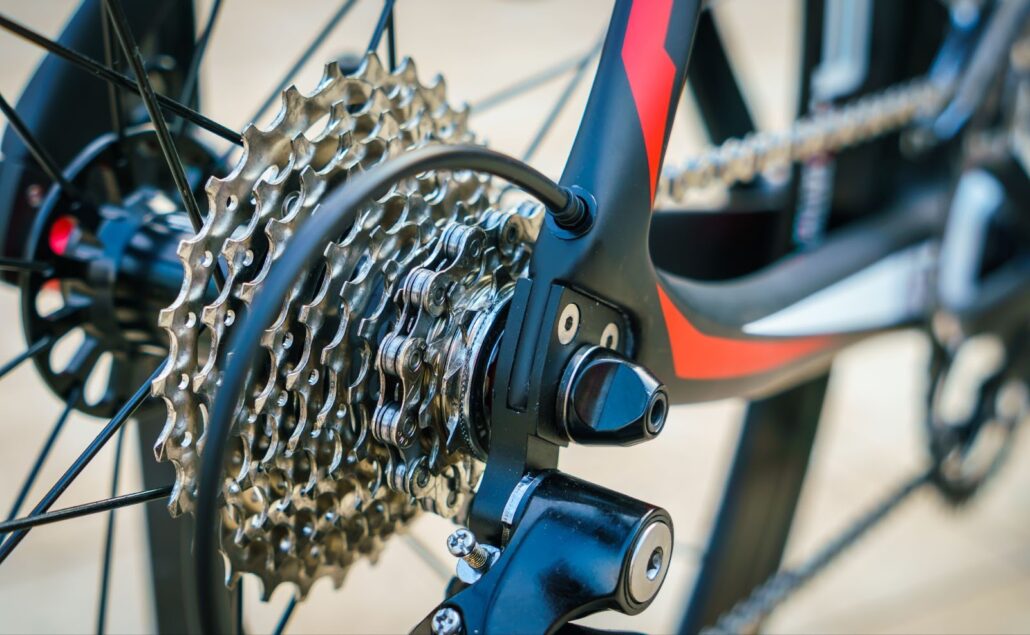Cranksets wield an immense influence over our riding experience, exerting a profound impact. Should you aspire to enhance your bicycle’s performance, commencing with optimal gearing emerges as the foremost step among many to address.
Within the expansive domain of available cranksets, an overwhelming abundance presents itself, rendering the task of selection a bewildering endeavor. The selection quandary is further intensified by the intricate array of crankset gear configurations, where instances like the 50/34 and 52/36 ratios manifest as bewildering choices.
The disparities existing within the realm of 50/34 versus 52/36 are poised for examination. In the context of cranksets, the 50/34 arrangement assumes the form of a compact iteration, while the 52/36 option embodies a semi-compact demeanor. The aspect of range allocation further demarcates these ratios; the 50/34 offering a more confined spectrum, whereas the 52/36 ratio boasts a comparatively broader scope. Furthermore, for those inclining towards a swifter and more brisk crankset encounter, the 52/36 ratio emerges as the superior selection.
However, the exposition provided here merely presents a glimpse into the discourse. It is incumbent upon us to elucidate the salient distinctions that distinguish these two chainset alternatives. Thus, embarking on this illuminating deliberation, we shall navigate the intricate terrain to ultimately discern the ideal crankset solution.
50/34 vs 52/36: A Comparative Analysis of Cycling Gear Attributes
| Aspects | Ratios (50/34) | Ratios (52/36) |
|---|---|---|
| Crankset | Compact Crankset | Semi-Compact Crankset |
| Range | Narrowed Range for Undulating Terrain | Expansive Range for Hilly Landscapes/Excellence in Hill Climbing |
| Velocity | Conventional Velocity | Enhanced Speed for Level or Hilly Pathways |
| Post-Shift Adjustment | Increased Adjustments Required Post-Shift | Reduced Fine-Tuning Needed After Shifting |
| Cycling Encounter | Slightly Weightier Perception | Yields an Airier Sensation in Cycling |
50/34 versus 52/36: A Face-Off of Chainring Ratios
Unearthing the optimal gravel crankset presents a formidable trial for numerous riders. The intricacy escalates when diverse gear configurations come into play, further muddling the decision-making process.
Upon the unveiling of the 50/34 and 52/36 chainset options, a significantly broader swath of enthusiasts exhibited a preference for the compact variety. However, the ensuing deliberations regarding the merits and demerits of each gave rise to a vigorous discourse pitting these two options against each other.
To bring lucidity to this discourse, we embark on an exhaustive juxtaposition of these two chainring ratios. Without any further ado, let us delve directly into this comprehensive analysis!
Understanding Compact and Semi-Compact Cranksets
For cycling enthusiasts who want to delve deeper into the machinery of their bikes, it’s essential to understand cranksets. At the heart of this lies the compact and semi-compact cranksets. The number of teeth on these chainrings plays a pivotal role in determining the gear ease and cycling experience.
Breaking Down the Numbers:
A 50/34 crankset implies that there are 50 teeth on the outer ring and 34 on the inner ring.
Similarly, 52/36 means there are 52 teeth on the outer ring and 36 on the inner.
The lesser the number of teeth on a chainring, the easier it is to pedal, especially when going uphill or starting from a stop.
Compact vs. Semi-Compact:
- 50/34 is a compact crankset, designed for general cycling experiences and steep terrains;
- 52/36 is a semi-compact crankset, gaining traction among many cyclists for its versatile gearing;
- When comparing the two, the largest gear of the 50/34 isn’t as big as that of the 52/36, affecting the speed and power a cyclist can generate.
Climbing Dynamics with Different Cranksets
Climbing on a bicycle isn’t just about leg strength; the type of crankset can significantly impact the experience.
Gear Ratios:
- A 50/34 combined with an 11-28 cassette offers a balanced cycling experience, especially on hilly terrains;
- On the other hand, a 52/36 crankset with the same cassette provides about 5% higher top speed before a cyclist begins to spin out.
Terrain Recommendations:
For undulating terrains with frequent climbs, 50/34 offers consistent and efficient pedaling.
In contrast, for flatter terrains, like in a triathlon, the 52/36 crankset allows for faster speeds and a more aggressive riding stance.
Customization Tips:
- Cyclists can modify their setups by changing the number of cassettes or replacing chainrings to fit their specific needs;
- Always ensure that replacement parts are compatible with the current crankset to maintain optimal performance and safety.
Crankset Choice for Climbing:
Considering the added speed advantage, especially on less challenging terrains, the 52/36 semi-compact crankset takes the crown. However, it’s crucial for riders to assess their specific needs and terrains before making a choice.
Winner: 52/36
Speed and Cycling Dynamics: Understanding Gear Choices
When diving into the world of triathlon cycling, the choice of gear ratios can significantly impact performance. Let’s explore the reasons behind why many triathlon cyclists opt for specific gear setups.
Popularity of the 52/36 Chainring Set:
Why 52/36?
- Offers a robust balance between speed and versatility;
- Enables cyclists to achieve remarkable speeds, especially when paired with an efficient cadence.
Achieving Maximum Speed:
- Spinning at about 110 rpm is considered a sweet spot for many cyclists;
- At this cadence, speeds up to 61 km/h are achievable, which is impressive for road cycling.
Comparing with 50/34 Chainring Set:
- While 50/34 is no slouch and can still deliver commendable speed, especially when paired with an 11-34 cassette;
- For optimal performance, a 52/36 chainring set combined with a 10-30 cassette often emerges superior.
Recommendation: For those eyeing top speeds and efficient performance, 52/36 is the more favorable choice.
Winner: 52/36
The Science of Correction Shifting
The act of shifting between chainrings can often require subsequent ‘correction shifts’ to ensure smooth and stable cycling. This process is particularly critical for maintaining momentum and stability during rides.
Gap Analysis Between Chainrings:
- A more pronounced gap exists between the 50/34 chainrings compared to the 52/36 setup;
- This gap difference dictates the frequency and nature of correction shifts.
Correction Shifts Explained:
- These are adjustments made, primarily at the back of the bike, to compensate for changes in gear ratios.
- They ensure a stable and consistent pedaling experience;
- The frequency of these shifts can vary based on the chainring setup.
Comparative Insights:
- On a 50/34 setup, correction shifts might be needed 2-3 times more frequently than on a 52/36;
- While this might seem trivial to recreational cyclists, in competitive settings like triathlons, minimizing shifting time can give a slight edge.
Tip: For competitive riders, focusing on gear setups that reduce the need for frequent correction shifts can help in shaving off valuable seconds.
Winner: 52/36
Weight Efficiency
Consideration of weight might become a focal point for you if your cycling prowess doesn’t boast extraordinary strength. However, should you find yourself belonging to the cadre of habitual cyclists with aspirations of enhanced power efficiency, directing your attention towards the 52/36 option would be a prudent choice.

The 52/36 cranksets possess a characteristic of diminished weight owing to their petite spiders and reduced chainring proportions. A resultant effect of this configuration is the adoption of a smaller cassette alongside a comparably shorter chain for your crankset.
Collectively, these factors coalesce into a cumulative reduction of over 100 grams in weight. While this numerical value might not appear significantly substantial on its own, the true comprehension of its impact manifests when you’re out pedaling. Furthermore, the diminished weight also extends its advantageous influence to your bicycle seat, fostering a more comfortable and dynamic riding experience.
The extent of your crankset’s lightness directly correlates with the elevation of its operational performance. As you embark on your cycling journeys, a heightened metabolic output becomes apparent, and although the improvement might seem modest, its significance should not be dismissed.
In the realm of chainsets, the 52/36 emerges as a versatile and comprehensive performer, effectively positioning itself as a markedly astute alternative.
In the grand deliberation between options, the victor emerges resoundingly as the 52/36 configuration.
Winner: 52/36
The Champion Emerges!
Are you still pondering over the choice between a 50/34 chainset or the 52/36 alternative? Cease your contemplation. This direct face-off ought to have provided ample clarity. Opting for the 52/36 crankset is the resounding decision.
Cycling, a sport rife with intensity and unwavering dedication, mandates precise equipment for an unparalleled riding experience. Across all tiers of cycling, the 52/36 crankset stands as the epitome of suitability. By sifting through its features, arriving at a verdict becomes a seamless process.
The consensus among seasoned cyclists leans towards the marginally heightened efficiency of larger chainrings.
Thus concludes our offerings for the day! We trust you relished this head-to-head clash while simultaneously unearthing the solution to your query.
Conclusion
Wrapping up the discussion, we’ve now covered all the essential information regarding the comparison between 50/34 and 52/36 gear ratios. Opting for the 52/36 ratio would provide you access to a suite of high-performance functionalities.
Should any additional inquiries arise, please don’t hesitate to reach out to us through the comment section. Wishing you the best of luck!






